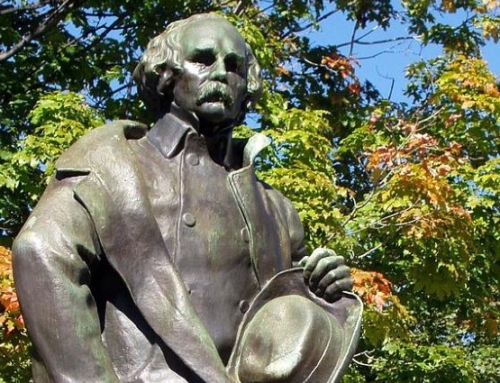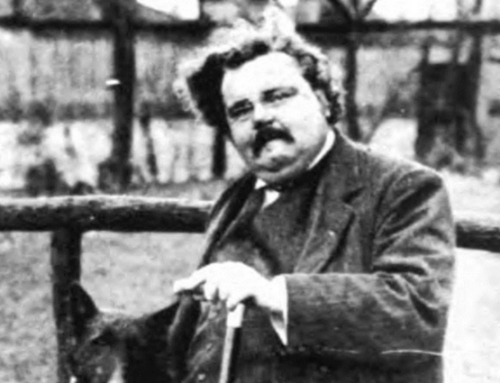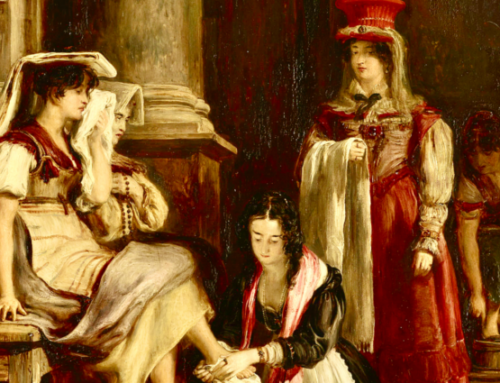Caryll Houselander’s novel “The Dry Wood” succeeds in depicting holiness as a real possibility for flesh-and-blood people and divine love as binding them together without taking away individuality, free will, or all problems. It is ancient in its understanding of the mystical body of Christ, modern in its techniques, and eternal in its evocation of the divine love that runs beneath even the most chaotic of human lives.
The Dry Wood by Caryll Houselander (323 pages, CUA Press, 2022)
 Readers of this journal should herald the new Catholic Women Writers series begun by scholars Bonnie Lander Johnson and Julia Meszaros at Catholic University of America Press. Full disclosure: they asked me a few years ago if I would be willing to serve on the advisory board for this new series of reprints of works by women of the Catholic Literary Revival who have not been remembered as well as Flannery O’Connor, Muriel Spark, or Dorothy Day. The somewhat forgotten authors to be reprinted would include, among others, Maisie Ward, Alice Meynell, Rumer Godden, Caroline Gordon, Sheila Kaye-Smith, and Marie Belloc-Lowndes. Gilbert readers will know that many of these and others have very direct ties to Chesterton. Meynell was Chesterton’s friend, Ward a friend and biographer of GKC, and Belloc-Lowndes was Hilaire’s sister.
Readers of this journal should herald the new Catholic Women Writers series begun by scholars Bonnie Lander Johnson and Julia Meszaros at Catholic University of America Press. Full disclosure: they asked me a few years ago if I would be willing to serve on the advisory board for this new series of reprints of works by women of the Catholic Literary Revival who have not been remembered as well as Flannery O’Connor, Muriel Spark, or Dorothy Day. The somewhat forgotten authors to be reprinted would include, among others, Maisie Ward, Alice Meynell, Rumer Godden, Caroline Gordon, Sheila Kaye-Smith, and Marie Belloc-Lowndes. Gilbert readers will know that many of these and others have very direct ties to Chesterton. Meynell was Chesterton’s friend, Ward a friend and biographer of GKC, and Belloc-Lowndes was Hilaire’s sister.
I’m glad I said yes. The inaugural volume is famed spiritual writer Caryll Houselander’s novel, The Dry Wood. Houselander (1901-1954), like Chesterton, had Maisie Ward as a biographer. Ward’s volume, titled That Divine Eccentric, certainly gave details about Ward’s oddness in worldly terms, but it focused on the divine aspects of her sensibility. She was the kind of Chestertonian mystic who seemed to actually open her eyes and see the New Jerusalem about her. Her eccentricity was due to being attuned to Christ, the center of reality.
Not only that, but she had a gift for telling others about it. Ward’s volume began with Ronald Knox’s suggestion that Houselander should have founded a school for people writing spiritual literature: “She seemed to see everything for the first time, and the driest of doctrinal considerations shone out like a restored picture when she had finished with it… she seemed to find no difficulty in getting the right word; no, not merely the right word, the telling word, that left you gaping.” Those who have read any of her most famous books such as The Reed of God and Wood of the Cradle, Wood of the Cross will know what Knox meant. These traits are present in this, her sole novel. (She did publish short stories.)
 The Dry Wood is the story of a collection of figures in Riverside, a town outside of London full of Irish Catholics, just before World War Two. The story begins in the aftermath of the death of Fr. Malone, the saintly parish priest whose legendary charity, poverty, and spiritual directness were recognized as real by Catholics and non-Catholics alike—even by Fr. O’Grady, his vicar who has now taken over the parish, and the archbishop. Fr. Malone’s nemesis, Msgr. Frayne, an Anglican clergy convert, has a horror of Fr. Malone’s rough-hewn sanctity that echoes his discomfort with the Catholic Church as a living mother who “apparently violates every one of the conventions that he has learned to love, and is likely to make constant and probably unreasonable demands of him.” He is trying to convince the archbishop to quash the popular devotion to the deceased priest—especially the planned unofficial novena to him for the healing of Willie Jewel, a severely handicapped dying six-year-old dear to the working-class town.
The Dry Wood is the story of a collection of figures in Riverside, a town outside of London full of Irish Catholics, just before World War Two. The story begins in the aftermath of the death of Fr. Malone, the saintly parish priest whose legendary charity, poverty, and spiritual directness were recognized as real by Catholics and non-Catholics alike—even by Fr. O’Grady, his vicar who has now taken over the parish, and the archbishop. Fr. Malone’s nemesis, Msgr. Frayne, an Anglican clergy convert, has a horror of Fr. Malone’s rough-hewn sanctity that echoes his discomfort with the Catholic Church as a living mother who “apparently violates every one of the conventions that he has learned to love, and is likely to make constant and probably unreasonable demands of him.” He is trying to convince the archbishop to quash the popular devotion to the deceased priest—especially the planned unofficial novena to him for the healing of Willie Jewel, a severely handicapped dying six-year-old dear to the working-class town.
Around this story of the question of the miracle Houselander weaves portraits of a handful of figures connected to the town. Willie’s father, Art, has been transformed by his fatherhood of this little boy. Carmel Fernandez, the daughter of an imperious Spanish immigrant, has escaped her father’s loveless piety to become a kept woman in the house of Solly Lee, the Jewish tailor whose financial success has not procured for him the love or the acceptance he wants. Timothy Green, a journalist sent to cover Fr. Malone’s death, has become Catholic and is seeking a faith without ands and buts. Rose O’Shane, a woman of charity, is plagued by a kind of functional alcoholism. And Fr. O’Grady, trying to follow his saintly mentor, seems thwarted by the fragmented and often uninspiring life of a parish priest.
What unites all of them is the need to discover Christ in the here and now, to discover joy in feasting through the joy of asceticism, to find the hidden triumph amid suffering. Houselander’s book is not perfect. As Johnson and Meszaros note in their introduction, if her structure for the book is near genius and her use of innovative modernist techniques reminds one of Waugh at his greatest, her tendency “to become homiletic and didactic” is a flaw in a novel. So, too, I think, is Houselander’s failure to fully depict Willie Jewel.
If imperfect, the novel nevertheless succeeds in depicting holiness as a real possibility for flesh-and-blood people and divine love as binding them together without taking away individuality, free will, or all problems. Not every character experiences full conversion even if knocked off a horse. Solly Lee feels an emptiness that hints at a divine discontent. Rose O’Shane’s own holiness doesn’t prevent her from having to work to conquer the bottle. Fr. O’Grady ends the book asking whether his fragmentary life can be that of a saint and realizing that “this broken life of his is the breaking of the bread.” A beautiful truth, but no less difficult to realize each day.
The Dry Wood is ancient in its understanding of the mystical body of Christ, modern in its techniques, and eternal in its evocation of the divine love that runs beneath even the most chaotic of human lives. It deserves republication and a new generation of readers.
Republished with gracious permission from Gilbert.
The Imaginative Conservative applies the principle of appreciation to the discussion of culture and politics—we approach dialogue with magnanimity rather than with mere civility. Will you help us remain a refreshing oasis in the increasingly contentious arena of modern discourse? Please consider donating now.
The featured image is “A Serious Talk” (by 1903) by Ludwig Johann Passini, and is in the public domain, courtesy of Wikimedia Commons.







Leave A Comment